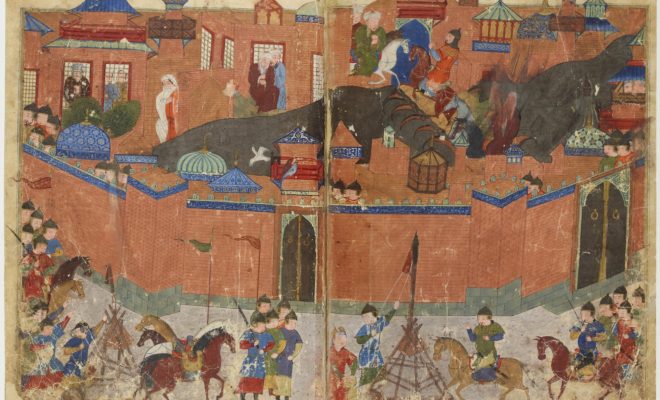The Great Siege of 1258: A Turning Point in History

Introduction
The year 1258 marked a significant turning point in history as the infamous Siege of Baghdad occurred. This six-day siege resulted in the capture of the Abbasid Caliphate’s capital by the Mongol Empire, leading to a heartbreaking destruction of one of the most influential centers of Islamic culture, science, and learning. This article delves into the events that took place during this pivotal time and explores its lasting impact on global history.
Background
In the years leading up to 1258, the Mongol Empire had been steadily expanding its territories under the leadership of Genghis Khan and his successors. Motivated by their relentless pursuit for power and wealth, they had already conquered large parts of China, Persia, and Central Asia. In 1255, Möngke Khan, Genghis Khan’s grandson, began organizing forces for campaigns in Iraq and Syria. The western campaign was led by his brother Hulagu Khan.
Siege of Baghdad
In preparation for an invasion of the region, Hulagu Khan assembled a formidable force that included Mongols, Turks, Chinese engineers, and Christian troops from Armenia and Georgia. Their objective was to subdue Islamic realms and create an alliance with European Crusader states against mutual enemies.
As Hulagu’s forces approached Baghdad in January 1258, they found themselves facing an ill-prepared defense led by Caliph Al-Musta’sim. On February 4th, the Mongols began their assault on the city walls with precision artillery fire from catapults and trebuchets. After several days of fierce fighting at different points along the walls, a Mongol assault group broke through on February 10th.
Following this breach, Hulagu offered Al-Musta’sim terms of surrender if he would submit to Mongol authority; however, these terms were ultimately rejected. Consequently, the Mongols entered the city and unleashed a horrifying campaign of destruction over the next few days.
The Devastation
During the occupation of Baghdad, the city bore witness to wanton death and destruction. It is estimated that between 100,000 and one million people lost their lives. Renowned libraries, schools, hospitals, mosques, and residences were razed to the ground. Priceless manuscripts and ancient texts were either burned or thrown into the Tigris River, turning its waters black with ink.
The Abbasid Caliphate came to an end when Al-Musta’sim was executed by Hulagu Khan on February 20th, 1258. Due to this result, the Islamic world was fragmented, and a long shadow had been cast upon Muslim intellectual development.
Lasting Impact of the Siege
The fall of Baghdad in 1258 sent shockwaves through both the Islamic world and Christian Europe. With Baghdad’s capture, numerous cultural achievements were lost forever. The intellectual hub that had once nurtured great scholars like Al-Khwarizmi and Al-Razi was now in ruins.
Additionally, this event marked the beginning of a power vacuum within the Islamic world. The fragmentation of political entities contributed to centuries of infighting that would severely curtail progress in science, medicine, technology, and social cohesion.
Conclusion
The Siege of Baghdad in 1258 stands as one of history’s most devastating events. With countless lives lost and an unparalleled impact on subsequent generations, it marks a vital turning point that shaped the future of humanity for centuries to come. While modern society continues to grapple with historical events’ consequences on contemporary concerns, it is essential to remember that understanding our past is key to navigating our present.



